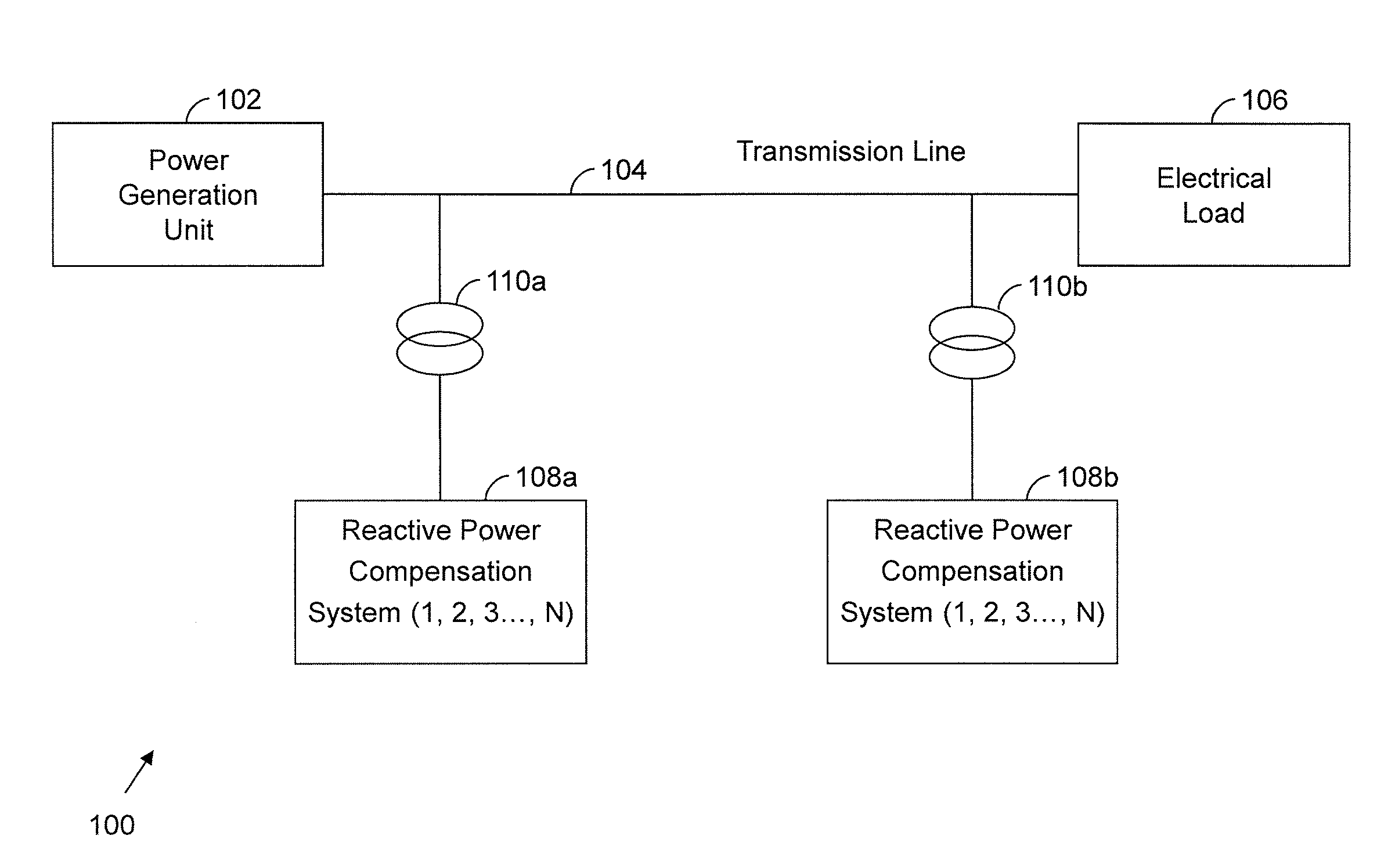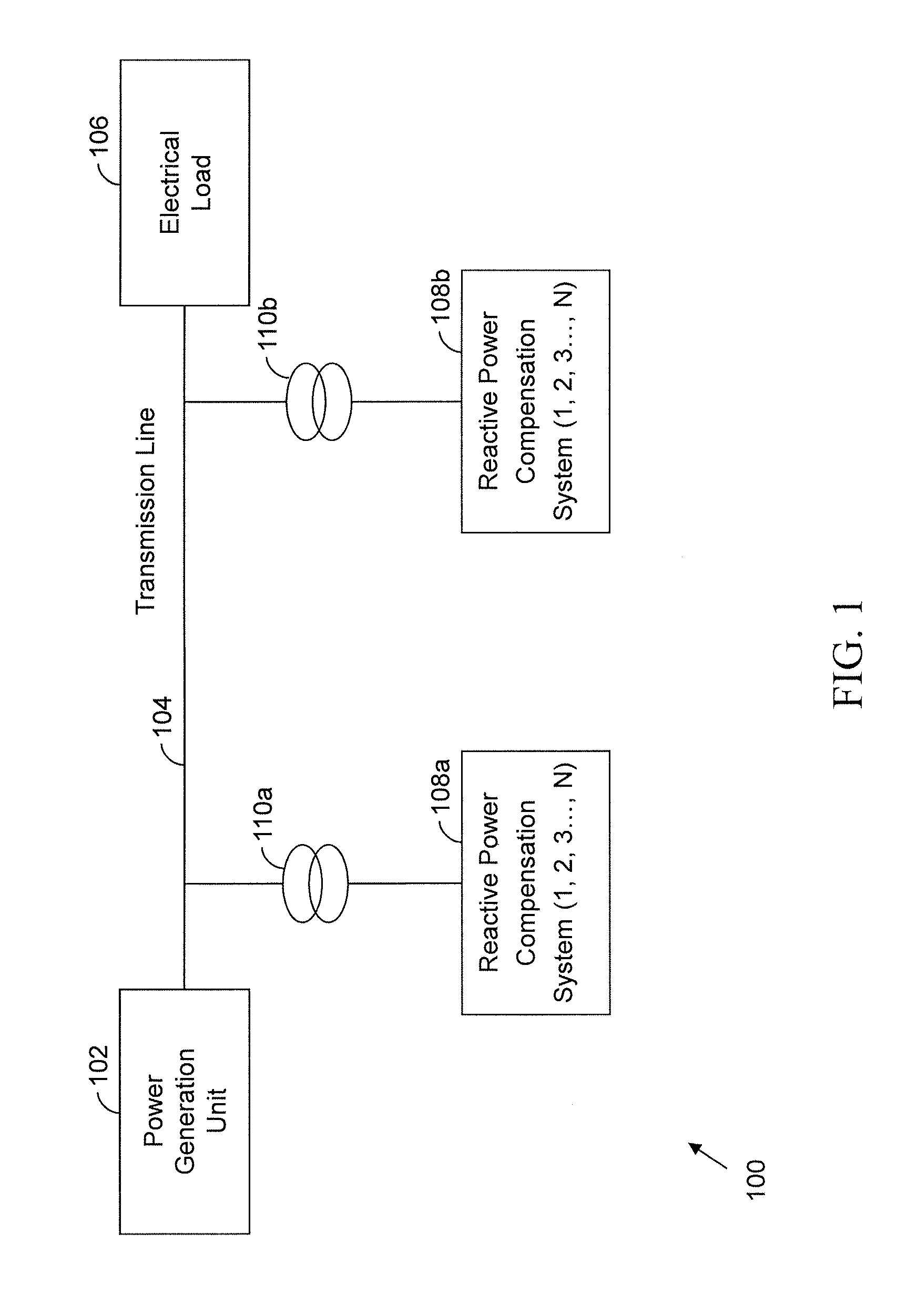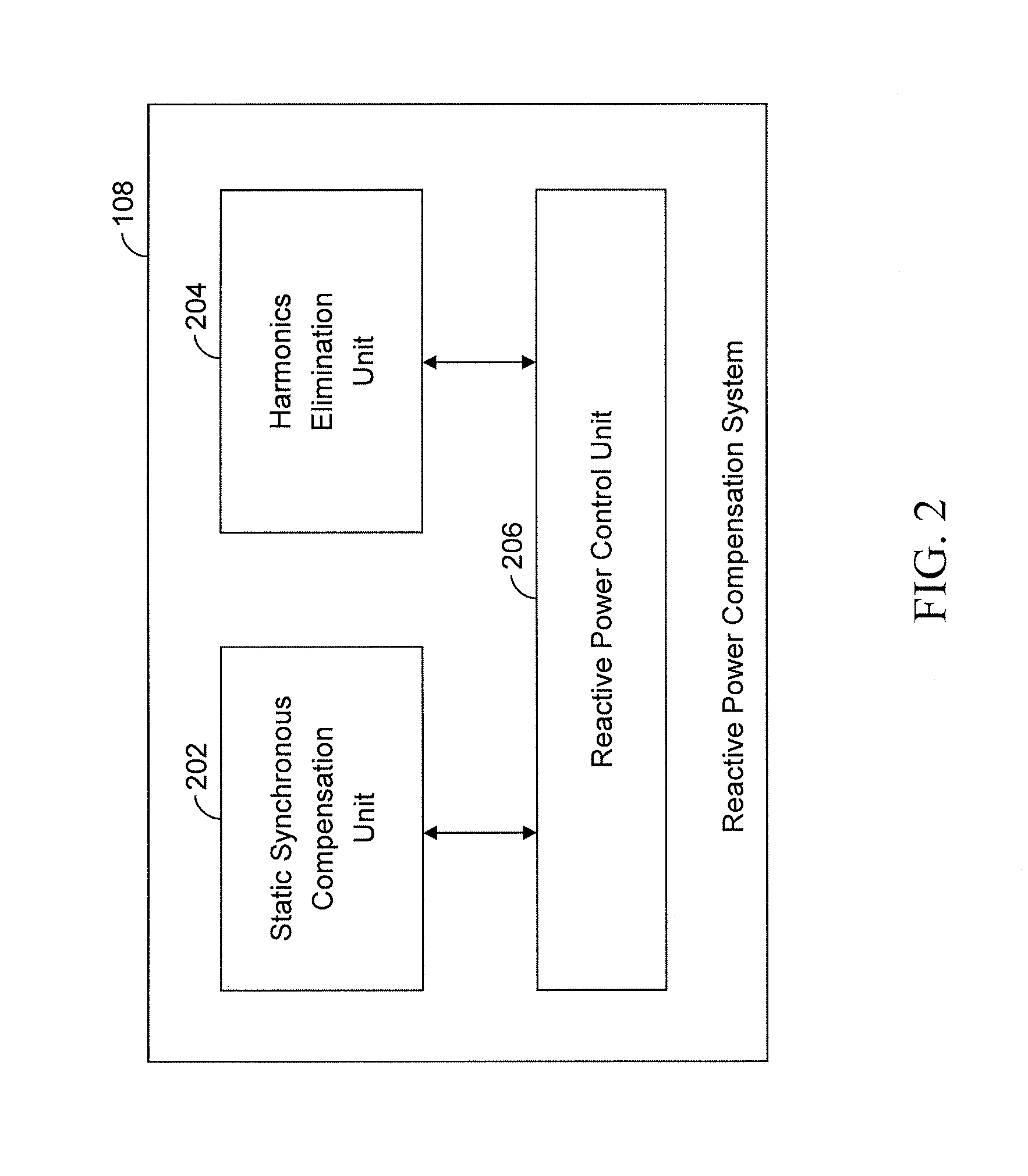Reactive power compensation in electrical power system
a technology of reactive power compensation and electrical power system, applied in the field of reactive power compensation system in electrical power system, can solve problems such as power system voltage and frequency stability problems, power transmission grid variation, and difficult integration with power transmission grids, so as to improve fault tolerance and redundancy, and effectively manage the reactive power compensation requirements
- Summary
- Abstract
- Description
- Claims
- Application Information
AI Technical Summary
Benefits of technology
Problems solved by technology
Method used
Image
Examples
Embodiment Construction
[0026]Before describing in detail the system for reactive power compensation in an electrical power system, in accordance with various embodiments of the present invention, it should be observed that the present invention resides primarily in combinations of system elements related to reactive power compensation in an electrical power system. Accordingly, the apparatus components have been represented, where appropriate, by conventional symbols in the drawings, showing only those specific details that are pertinent for an understanding of the present invention, so as not to obscure the disclosure with details that will be readily apparent to those with ordinary skill in the art, having the benefit of the description herein.
[0027]In this document, the terms “comprises,”“comprising,” or any other variation thereof, are intended to cover a non-exclusive inclusion, such that a process, method, article or apparatus that comprises a list of elements does not include only those elements bu...
PUM
 Login to View More
Login to View More Abstract
Description
Claims
Application Information
 Login to View More
Login to View More - R&D
- Intellectual Property
- Life Sciences
- Materials
- Tech Scout
- Unparalleled Data Quality
- Higher Quality Content
- 60% Fewer Hallucinations
Browse by: Latest US Patents, China's latest patents, Technical Efficacy Thesaurus, Application Domain, Technology Topic, Popular Technical Reports.
© 2025 PatSnap. All rights reserved.Legal|Privacy policy|Modern Slavery Act Transparency Statement|Sitemap|About US| Contact US: help@patsnap.com



